Related Research Articles

Corsican is a Romance language constituted by the continuum of the Italo-Romance dialects spoken on the Mediterranean island of Corsica (France) and on the northern end of the island of Sardinia (Italy). Corsican is closely related to the Tuscan varieties from the Italian peninsula, and therefore to the Florentine-based standard Italian.
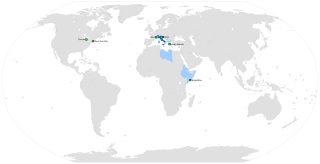
Italian is a Romance language of the Indo-European language family that evolved from the Vulgar Latin of the Roman Empire. About 85 million people speak this language (2022). Italian is credited as the most direct descendant of Latin, being the closest to it among the national languages and the least divergent from it together with Sardinian when regional and minority languages are also taken into account. Italian is an official language in Italy, Switzerland, San Marino, and Vatican City. It has an official minority status in western Istria.

Romansh is a Gallo-Romance language spoken predominantly in the Swiss canton of the Grisons (Graubünden). Romansh has been recognized as a national language of Switzerland since 1938, and as an official language in correspondence with Romansh-speaking citizens since 1996, along with German, French, and Italian. It also has official status in the canton of the Grisons alongside German and Italian and is used as the medium of instruction in schools in Romansh-speaking areas. It is sometimes grouped by linguists with Ladin and Friulian as the Rhaeto-Romance languages, though this is disputed.

Ladin is a Romance language of the Rhaeto-Romance subgroup, mainly spoken in the Dolomite Mountains in Northern Italy in the provinces of South Tyrol, Trentino, and Belluno, by the Ladin people. It exhibits similarities to Swiss Romansh and Friulian.
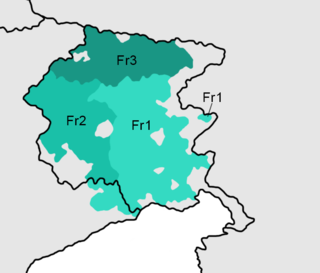
Friulian or Friulan is a Romance language belonging to the Rhaeto-Romance family, spoken in the Friuli region of northeastern Italy. Friulian has around 600,000 speakers, the vast majority of whom also speak Italian. It is sometimes called Eastern Ladin since it shares the same roots as Ladin, but over the centuries, it has diverged under the influence of surrounding languages, including German, Italian, Venetian, and Slovene. Documents in Friulian are attested from the 11th century and poetry and literature date as far back as 1300. By the 20th century, there was a revival of interest in the language.

Rhaeto-Romance, Rheto-Romance, or Rhaetian, is a purported subfamily of the Romance languages that is spoken in south-eastern Switzerland and north-eastern Italy. The name "Rhaeto-Romance" refers to the former Roman province of Raetia. The question of whether these languages actually form a subfamily is called the Questione Ladina. The Italian linguist Graziadio Ascoli, writing in 1873, found them to share a number of intricacies and believed they formed a linguistic group. What distinguishes the Rhaeto-Romance languages from Italian are their phonemic vowel length, consonant formation, and a central rounded vowel series. If the subfamily is genuine, three languages would belong to it: Romansh in Switzerland, and Ladin and Friulian in Italy. Their combined number of speakers is about 660,000; the large majority of these speak Friulian.
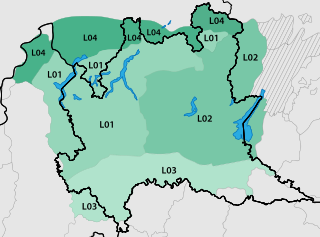
Lombard is a Gallo-Romance language, consisting in a linguistic continuum spoken by millions of speakers in Northern Italy and Southern Switzerland, including most of Lombardy and some areas of neighbouring regions, notably the eastern side of Piedmont and the western side of Trentino, and in Switzerland in the cantons of Ticino and Graubünden. Lombard dialects are also heard in Santa Catarina in Brazil.
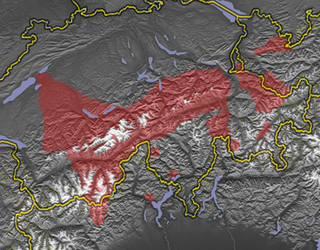
Walser German and Walliser German are a group of Highest Alemannic dialects spoken in parts of Switzerland, Italy, Liechtenstein, and Austria (Vorarlberg).

The Walser people are the speakers of the Walser German dialects, a variety of Highest Alemannic. They inhabit the region of the Alps of Switzerland and Liechtenstein, as well as the fringes of Italy and Austria. The Walser people are named after the Wallis (Valais), the uppermost Rhône valley, where they settled from roughly the 10th century in the late phase of the migration of the Alamanni, crossing from the Bernese Oberland; because of linguistic differences among the Walser dialects, it is supposed that there were two independent immigration routes.

Griko, sometimes spelled Grico, is the dialect of Italiot Greek spoken by Griko people in Salento and in Calabria. Some Greek linguists consider it to be a Modern Greek dialect and often call it Katoitaliótika or Grekanika (Γραικάνικα), whereas its own speakers call it Greko or Griko. Griko is spoken in Salento while Greko is spoken in Calabria. Griko and Standard Modern Greek are partially mutually intelligible.
Regional Italian is any regional variety of the Italian language.
Brigasc is a dialect of the Ligurian language. It is spoken in Italy and France.

The languages of Italy include Italian, which serves as the country's national language, as well as numerous local and regional languages, most of which, like Italian, belong to the broader Romance group. The majority of languages often labeled as regional are distributed in a continuum across the regions' administrative boundaries, with speakers from one locale within a single region being typically aware of the features distinguishing their own variety from one of the other places nearby.

The Gallo-Italic, Gallo-Italian, Gallo-Cisalpine or simply Cisalpine languages constitute the majority of the Romance languages of northern Italy. They are Piedmontese, Lombard, Emilian, Ligurian, and Romagnol. Although most publications define Venetian as part of the Italo-Dalmatian branch, both Ethnologue and Glottolog group it into the Gallo-Italic languages.
Western Lombard is a group of dialects of Lombard, a Romance language spoken in Italy. It is widespread in the Lombard provinces of Milan, Monza, Varese, Como, Lecco, Sondrio, a small part of Cremona, Lodi and Pavia, and the Piedmont provinces of Novara, Verbano-Cusio-Ossola, the eastern part of the Province of Alessandria (Tortona), a small part of Vercelli (Valsesia), and Switzerland. After the name of the region involved, land of the former Duchy of Milan, this language is often referred to as Insubric or Milanese, or, after Clemente Merlo, Cisabduano.
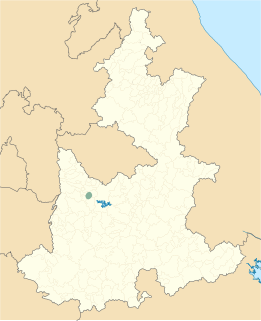
Chipilo Venetian (Venetan) or Chipileño, is a diaspora language and linguistic variant of Venetan, a Romance language belonging to the Gallo-Italian group and native to the Veneto region of Northern Italy, spoken in Chipilo, a town in the Mexican state of Puebla.

The Resian dialect is a distinct dialect of Slovene spoken in the Resia Valley, Province of Udine, Italy, close to the border with Slovenia. Because of its remote location outside Slovenia, the dialect has phonetic properties different from standard Slovene, and from most other Slovene dialects.

The Calabrian dialect of Greek, or Grecanico is the variety of Italiot Greek used by the ethnic Griko people in Calabria, as opposed to the Italiot Greek dialect spoken in the Grecìa Salentina. Both are remnants of the Ancient and Byzantine Greek colonization of the region.

Ornavasso is a comune (municipality) in the Province of Verbano-Cusio-Ossola in the Italian region Piedmont, located about 110 kilometres (68 mi) northeast of Turin and about 11 kilometres (7 mi) northwest of Verbania.
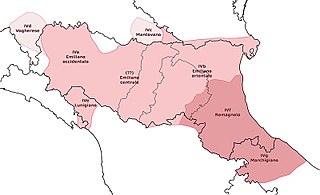
Emilian are a group of closely-related dialects referred spoken in the historical region of Emilia, the western portion of today's Emilia-Romagna region, in Northern Italy.
References
- ↑ Quaglia, Giorgio (2015-10-08). Il piacere di scrivere. Mnamon. ISBN 978-88-6949-063-7.
- ↑ "Mount Cistella: the great hall of Messer lo Diavolo - Aree protette dell'Ossola". www.areeprotetteossola.it. Retrieved 2022-06-08.
- ↑ "Torototela, il poeta dei due mondi che in dialetto rideva del provincialismo dell'Ossola". La Stampa (in Italian). 2020-12-22. Retrieved 2022-06-08.